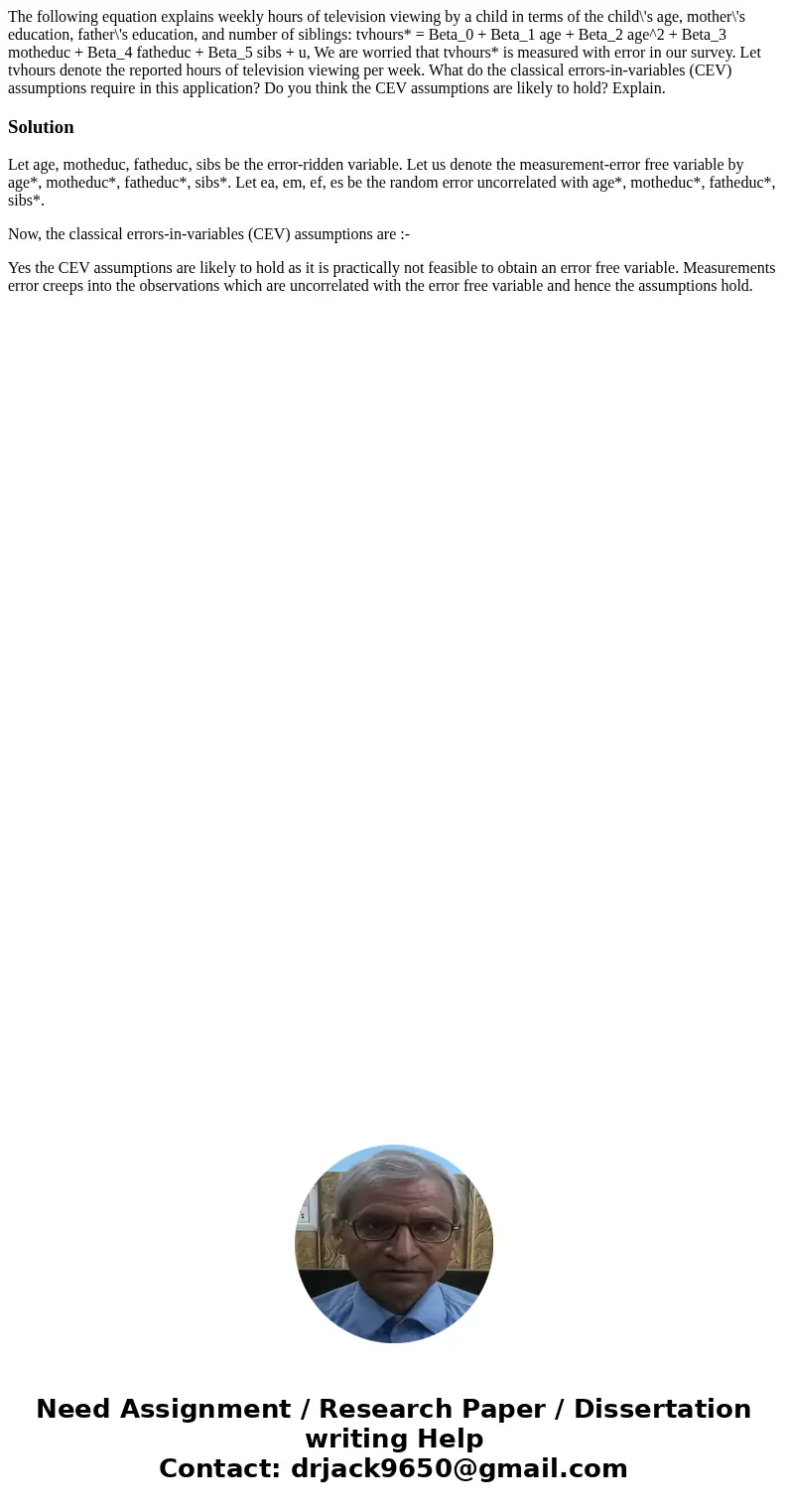The following equation explains weekly hours of television v
The following equation explains weekly hours of television viewing by a child in terms of the child\'s age, mother\'s education, father\'s education, and number of siblings: tvhours* = Beta_0 + Beta_1 age + Beta_2 age^2 + Beta_3 motheduc + Beta_4 fatheduc + Beta_5 sibs + u, We are worried that tvhours* is measured with error in our survey. Let tvhours denote the reported hours of television viewing per week. What do the classical errors-in-variables (CEV) assumptions require in this application? Do you think the CEV assumptions are likely to hold? Explain.
Solution
Let age, motheduc, fatheduc, sibs be the error-ridden variable. Let us denote the measurement-error free variable by age*, motheduc*, fatheduc*, sibs*. Let ea, em, ef, es be the random error uncorrelated with age*, motheduc*, fatheduc*, sibs*.
Now, the classical errors-in-variables (CEV) assumptions are :-
Yes the CEV assumptions are likely to hold as it is practically not feasible to obtain an error free variable. Measurements error creeps into the observations which are uncorrelated with the error free variable and hence the assumptions hold.

 Homework Sourse
Homework Sourse